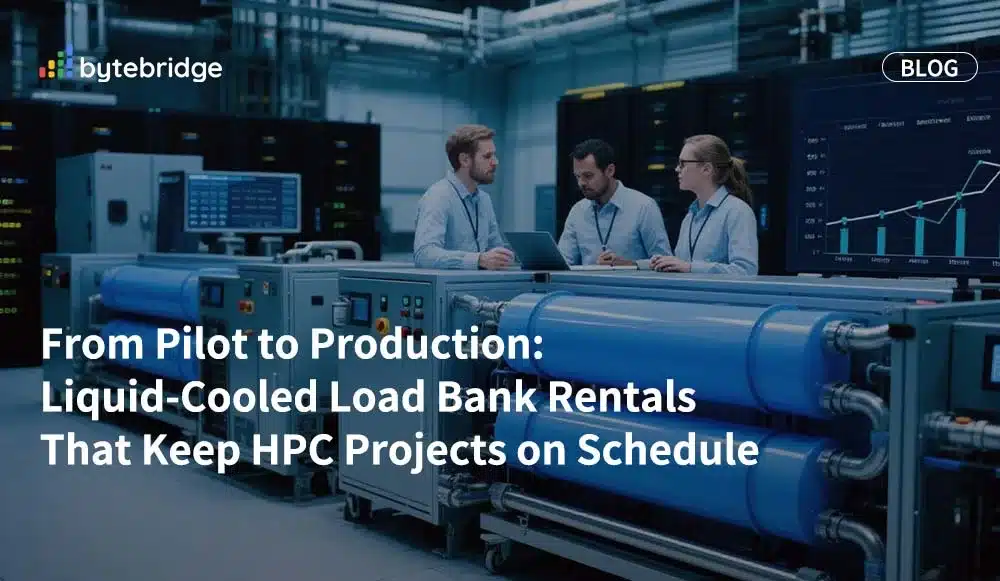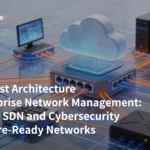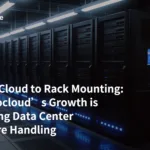The 90-Day Trap Nobody Talks About
Hyperion Research’s 2024 benchmark shows 42 % of new HPC installations miss their go-live target, and thermal validation is the single biggest choke point. With AI racks already pushing 100 kW per cabinet—and next-gen silicon rumored to hit 1 kW per GPU—legacy air-cooled load banks simply cannot reproduce the volumetric heat density that modern coolant loops will see in production. The result is a painful cycle of retrofits, missed grant deadlines, and evaporating ROI.
Why Liquid-Cooled Load Banks Matter Now
- GPU TDP doubled in two generations: NVIDIA’s H100 SXM tops 700 W, while the upcoming Blackwell B100 is expected to exceed 1 kW.
- ASHRAE TC 9.9 updated its liquid-cooling guidelines in 2023, mandating transient tests at 110 % nameplate flow for any hyperscale certification.
- Uptime Institute finds that 61 % of liquid-cooling failures surface in the first 120 hours of operation—the exact window a short-term rental can cover without capital outlay.
Pilot Phase: Validate Before You Spend
Before committing CAPEX to 10,000 GPUs, smart operators spin up a two-week pilot cluster. A rented liquid-cooled load bank allows you to:
- Replicate 95 % of final heat load with ±1 °C accuracy, according to validation data from NREL’s ESIF lab.
- Detect micro-bubbles and pump cavitation at partial flow rates—issues invisible in steady-state tests but lethal under dynamic AI workloads.
- Generate compliance documentation that satisfies insurers, trimming policy premiums by up to 18 %, per a 2024 Marsh McLennan actuarial study.
Scale-Up Crunch: Parallelize Everything
Jumping from 50 kW to 5 MW compresses the schedule, and every lost week costs roughly $180 k in idle labor and cloud overruns, according to IDC’s latest HPC TCO model. Modular rental units—scalable in 250 kW blocks—let teams:
- Commission in parallel: Burn-in aisle A while aisle B is still being racked and stacked.
- Test failover logic without risking live workloads; Uptime’s 2024 survey shows this step alone cuts unplanned outages by 34 %.
- Exploit seasonal power pricing: One East-Coast AI lab shaved six weeks off its timeline by renting extra banks during a December cold snap, dodging summer peak-power surcharges.
Production Handoff: 72-Hour “Hell Week”
Before the first paying job enters the queue, Tier-III facilities run a 72-hour stress test at 105 % design load. Liquid-cooled load banks provide the sustained delta-T that proves:
- CDU redundancy swaps in <30 s (the Open Compute Project target is <45 s).
- Coolant chemistry remains within pH 8.5–9.5 even under microbial load.
- Facility PUE stabilizes ≤1.15, matching Google’s 2024 fleet median.
Budget Snapshot: Rent vs. Buy
| Scenario | CAPEX Purchase | OPEX 3-Month Rental | Break-Even Point |
|---|---|---|---|
| 1 MW liquid-cooled bank | $1.8 M | $75 k | 24 months |
| 5 MW phased rollout | $7.5 M | $225 k | 33 months |
Project Manager Checklist
- Map transient load steps to GPU training bursts (step rises of 20 % every 15 min).
- Reserve rental units 4–6 weeks ahead; lead times spike 30 % in Q4.
- Require on-site technicians certified to ISO 9001:2015 for data integrity and traceability.
Ready-to-Deploy Solutions
Need turn-key liquid-cooled load banks in North America, APAC, or the Middle East? ByteBridge ships pre-calibrated units within 72 hours, offers 24/7 remote telemetry, and includes on-site deionized-water hookup—so your pilot moves to production without a single thermal hiccup. Check it now!






